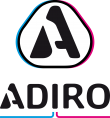EDS Water Management Membrane filtration station


Membrane filtration is highly topical in modern water treatment. Depending on the pore size, the principle is used in water treatment.
Drinking water and wastewater treatment in the form of microfiltration and ultrafiltration is another area of application. The objective of both methods is retaining pathogenic germs, for example. The differences between the cross-flow and dead-end filtration operating modes are covered.
The membrane filtration station maps both processes. In cross-flow operation, the trans-membrane pressure is set for optimal filter performance. The inflows to and outflows from membrane filters can be measured and thus the performance of the membrane can be determined.
The backwash process takes place automatically if the filter performance is insufficient. Backwashing uses system filtrate created previously. The pressure resistance test checks the functionality of the membrane.
Other typical applications include:
- Reverse osmosis for seawater desalination
- Process water treatment in the pharmaceutical industry
- Steam generation in power stations
The station is fully assembled, wired and tested.
Including control system with FluidLab®-EDS Water Management, EasyPort, connecting cables, accessory set and "Getting Started" technical documentation.
Main components
3 l tank, including overflow rim, 3/2-way ball valve, membrane filter unit, capacitive proximity sensor, float switch, magnetic-inductive flow sensor, pneumatic valve terminal with 3/2-way solenoid valves, 5/2-way solenoid valve, membrane pump, proportional media valve, proportional pressure regulator valve, pressure sensor, electric connection board, aluminium profile plate.
Note
For single operation, a water supply tank/ground water (order no. 8024503) is required.
General training content
- Controlling, regulating and monitoring physical variables such as levels, flows and pressure
- Technical/physical functions of sensors and actuators as well as wiring, adjustment and parameterisation
- Analysing controlled systems, parameterising and optimising regulators
- System operation, maintenance, troubleshooting and repair
- Plant engineering
- Optimisation and energy monitoring
- Electronic data processing
Learning content for project work
- Membrane filtration operating modes like filtration and backwashing
- Presentation of the theoretical basic principles of various membrane filtration (micro-, ultra-, nanofiltration and reverse osmosis)
- Process engineering differences between the cross-flow and dead-end filtration
- Automated integrity test for quality testing the membrane via pneumatic actuation and monitoring
- Effect of the transmembrane pressure on the filter performance
- Functions of pneumatically driven valves and fittings
Adress
ADIRO Automatisierungstechnik GmbH
Limburgstraße 40
73734 Esslingen
Tel.: +49(0)711/919904-0
E-Mail: info(at)adiro.com


